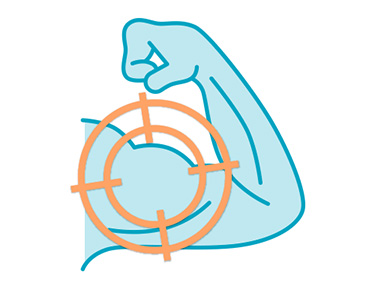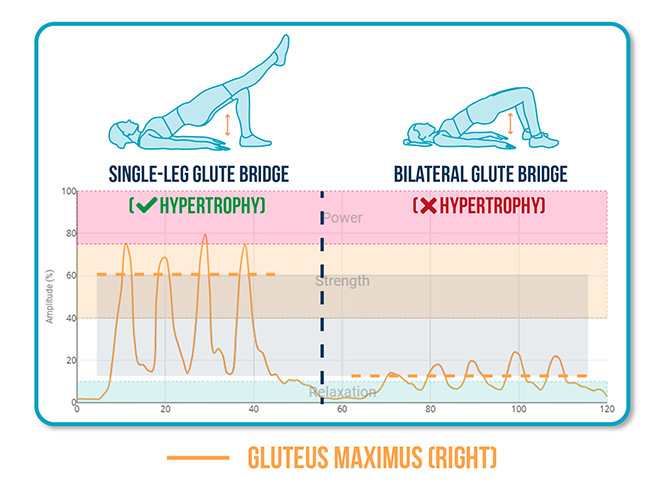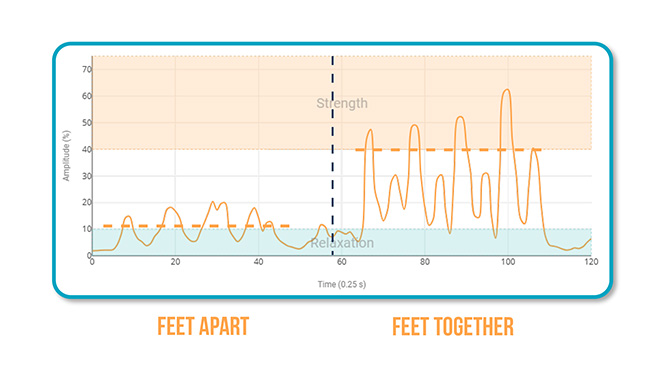In the world of training, the word hypertrophy is automatically linked to big muscles, intense workouts, and high training volume. But there’s one concept that often raises questions—especially among coaches and movement professionals:
👉 Does it make sense to use electromyography (EMG) to improve hypertrophy?
In this post, you’ll get a clear explanation of what muscle activity is, how it’s measured with EMG, and what role it truly plays in muscle growth.
You’ll also learn how to use it to optimize the exercises you prescribe and make sure your patients or athletes are training as efficiently as possible.
And just a quick spoiler before you keep reading:
If you want to design more effective workouts, prevent compensations, and target the stimulus better, EMG will help you do it.
Contact us and discover how to integrate mDurance EMG into your training to optimize hypertrophy.
What Is Muscle Activity and How Is It Related to Hypertrophy?
Muscle activity refers to the level of contraction a muscle produces during an exercise. It can be measured objectively using surface EMG, which records how much electrical activity a muscle generates when activated.
This lets you know, with real data, which muscles are working more or less during a given task.
But there’s a common misconception that needs clearing up:

Why Isn’t There a Direct Link Between Muscle Activation and Hypertrophy?
Even if a muscle is highly active during an exercise, that alone doesn’t guarantee it will grow. Hypertrophy depends on multiple factors, such as:
- Total training volume
- Relative intensity (load)
- Sustained mechanical tension
- Time under tension
- Muscle failure and local fatigue
So, muscle activation is just one ingredient in the process—but that doesn’t make it irrelevant.
So What’s the Real Role of Muscle Activity?
Muscle activity gives you a key piece of information:
It tells you which muscles are actually being recruited and how the load is being distributed during the exercise.

This has two direct benefits for anyone training for hypertrophy:
- It increases mechanical tension on the target muscle, improving stimulus quality.
- It helps prevent compensations that shift the work to other muscle groups.
In other words, EMG doesn’t replace sound training principles, but it helps you fine-tune execution and choose exercises that make every rep count.
How to Maximize Activation in Each Exercise Using EMG
Using EMG allows you to identify which exercises actually activate the muscle you want to develop.
Practical example:
👉 Compare a bilateral glute bridge with a single-leg glute bridge.

The single-leg version shows higher activation of the gluteus maximus, making it a more efficient choice if your goal is to target that muscle.
This doesn’t guarantee hypertrophy on its own, but it lets you focus effort where it matters, improving the effectiveness of volume and load applied afterward.
Muscle Activation vs. Hypertrophy: A Real Example
Let’s say your goal is to work on the gluteus maximus. You know that the hip thrust is one of the most popular exercises.

Using EMG, you discover that glute activation increases significantly when the feet are placed closer to the hips, compared to a more extended stance.That insight gives you an advantage:
You can adjust technique to better target the desired muscle—without increasing the load or the number of reps.
Conclusion
The relationship between muscle activity and hypertrophy isn’t direct, but it is connected.
EMG won’t tell you if a muscle will grow—but it shows you whether it’s doing its job.
And when that’s combined with smart programming around volume, intensity, and technique, it can make a big difference in your results.
If you want to design more effective workouts, prevent compensations, and better direct the training stimulus, EMG can become a key tool.
👉 Want to learn how to use it in your clinic or facility?
Contact us and discover how to integrate mDurance EMG into your training to optimize hypertrophy.

